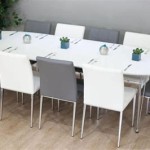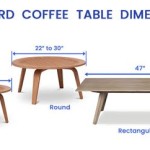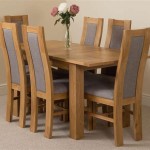Children's Adjustable Table and Chairs: An Overview
Children's adjustable tables and chairs represent a category of furniture designed specifically for use by children, engineered with the capability to be modified in height. This adaptability addresses the varying developmental stages of children, promoting ergonomic comfort and supporting age-appropriate learning environments. These furniture pieces are found in homes, classrooms, daycare centers, and various other child-centric settings.
The core function of adjustable tables and chairs is to ensure optimal posture and comfort for children as they engage in activities such as drawing, reading, writing, and playing. Traditional, non-adjustable furniture often forces children to adapt their posture to fit the furniture, which can lead to discomfort, fatigue, and potentially, long-term musculoskeletal issues. Adjustable furniture, conversely, adapts to the child, promoting a healthier and more conducive environment for learning and development.
The construction of children's adjustable tables and chairs involves a range of materials, including wood, metal, and plastic. Each material offers distinct advantages and disadvantages in terms of durability, aesthetics, and cost. The adjustment mechanisms also vary, ranging from simple manual systems to more complex gas-lift or motorized options. The choice of material and adjustment mechanism significantly impacts the overall quality, longevity, and user-friendliness of the furniture.
Key Point 1: Ergonomic Benefits and Posture Support
Ergonomics is a critical consideration in the design and selection of children's furniture. Poor posture during childhood can lead to a variety of health problems, including back pain, neck pain, and spinal deformities. Adjustable tables and chairs can mitigate these risks by allowing parents and educators to customize the furniture's height to match the child's specific needs.
Specifically, the correct table height allows a child to sit with their feet flat on the floor or supported by a footrest, knees bent at a 90-degree angle, and elbows resting comfortably on the table surface. This posture minimizes strain on the back and neck. Similarly, the chair height should allow for proper lumbar support and prevent slouching.
The benefits of ergonomic design extend beyond physical comfort. Studies have shown that proper posture can improve concentration, focus, and overall cognitive performance. When a child is comfortable and well-supported, they are less likely to be distracted by discomfort and more likely to engage fully in their activities.
Furthermore, adjustable tables and chairs can accommodate children with special needs. Children with physical disabilities or unique postural requirements can benefit greatly from the ability to customize their furniture to provide optimal support and comfort. This can promote inclusivity and allow all children to participate fully in learning and play.
The selection of an ergonomically designed adjustable table and chair set should involve considering the child's measurements and the types of activities they will be engaging in. Adjustable features should be easy to use and allow for precise adjustments to ensure optimal comfort and support. The furniture should also be stable and durable to withstand the wear and tear of daily use.
Key Point 2: Adaptability and Longevity
One of the primary advantages of children's adjustable tables and chairs is their adaptability. As children grow and develop, their furniture needs change rapidly. Adjustable furniture eliminates the need to constantly replace furniture as the child outgrows it. This can save parents and educators a significant amount of money over time, and reduces waste associated with disposing of unwanted furniture.
The adjustment range is a critical factor to consider when selecting adjustable furniture. The furniture should be adjustable to a height that is appropriate for the child's current size and continue to be adjustable as the child grows. A wide adjustment range ensures that the furniture will remain useful for a longer period.
Beyond growth, adjustable tables and chairs can also adapt to different activities. For example, a lower table height may be suitable for art projects, while a higher table height may be more appropriate for writing or reading. The ability to adjust the furniture to suit different activities can enhance the child's comfort and productivity.
The longevity of adjustable furniture depends on its construction and materials. Durable materials such as solid wood or heavy-duty metal frames are more likely to withstand the rigors of daily use. The adjustment mechanisms should also be robust and reliable to ensure that they continue to function properly over time. Regular maintenance, such as tightening screws and cleaning the surfaces, can also extend the lifespan of the furniture.
Choosing adjustable furniture also promotes a more sustainable approach to consumption. By investing in furniture that can adapt to the child's changing needs, parents and educators can reduce their environmental impact and contribute to a more sustainable future.
Key Point 3: Safety Considerations and Design Features
Safety is paramount when selecting any type of furniture for children. Adjustable tables and chairs should be designed and manufactured to meet or exceed relevant safety standards. This includes standards for stability, weight capacity, and the absence of hazardous materials.
Stability is crucial to prevent tipping or collapsing. The table and chairs should have a wide base and a low center of gravity to minimize the risk of accidents. The adjustment mechanisms should also be designed to prevent accidental adjustments that could cause injury.
The materials used in the construction of the furniture should be non-toxic and free from harmful chemicals such as lead, phthalates, and formaldehyde. Many manufacturers now offer furniture made from eco-friendly materials, such as sustainably harvested wood and recycled plastics.
Design features that enhance safety include rounded edges and smooth surfaces to prevent scrapes and cuts. The size and shape of the furniture should also be appropriate for the child's age and size. For example, chairs should be sized to allow the child to sit comfortably without being too large or too small.
Locking mechanisms on adjustable features are also important. These mechanisms prevent accidental adjustments and ensure that the furniture remains at the desired height. The locking mechanisms should be easy for adults to operate but difficult for children to tamper with.
Proper assembly and setup are also essential for ensuring the safety of adjustable tables and chairs. Follow the manufacturer's instructions carefully and ensure that all screws and bolts are securely tightened. Regularly inspect the furniture for any signs of wear and tear and make any necessary repairs promptly.
Beyond safety standards, the design of the furniture can also contribute to a child's development. Bright colors, engaging patterns, and child-friendly designs can stimulate creativity and imagination. The furniture should also be easy to clean and maintain to ensure that it remains hygienic and appealing.
In addition to the above key points, consider the storage aspect when choosing a children's adjustable table and chair. Some models come with built-in storage options such as drawers or shelves which can be useful for keeping art supplies, books, or toys organized. This can help to promote a clutter-free environment and encourage children to take responsibility for tidying up their belongings.
The market offers a diverse range of children's adjustable tables and chairs, varying in price, quality, and features. Thorough research and comparison are recommended to identify the furniture that best meets the specific needs and preferences of the child and the intended use environment. Consulting reviews from other parents or educators can provide valuable insights into the durability, functionality, and overall satisfaction of different models.
Ultimately, investing in well-designed and properly fitted adjustable tables and chairs for children is an investment in their health, well-being, and development. By providing ergonomic support, promoting good posture, and adapting to their changing needs, these furniture pieces can contribute to a more comfortable, productive, and enjoyable learning and play experience.

Height Adjustable Kids Study Table And Chair Set

Mm Toys Heavy Duty Study Table Chair Set Multipurpose With 4 Adjustable Size For Kids 3 To 14 Years Blue Design May Vary

Costway Kids Study Desk Chair Set Adjustable Children W Tilt Desktop

Little Fingers 45 Round Red Plastic Height Adjustable Activity Table Intra Kids School Supplies

Solid Wood Adjustable Children Study Table And Chair For Home Furniture Desk Kids Made In Com

Staranddaisy Best Kids Study Table Desk And Chair Set For Children S Height Adjustable S01 Pink At 7499 Piece In Ghaziabad Id 27443774188

Kids Table And 4 Chairs Set With Graffiti Desktop Height Adjustable Toddler

Solid Wood Adjustable Children Study Table And Chair For Home Furniture

Newest Kids Study Table Chair Height Adjustable Children Folding Assemble And Desk Set Made In Com

R For Rabbit Little Genius Woodland Kids Study Table








